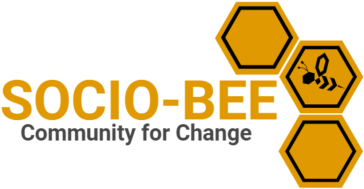This paper proposes and showcases a methodology to develop an observational behavior assessment instrument to assess psychological competencies of police officers. We outline a step-by-step methodology for police organizations to measure and evaluate behavior in a meaningful way to assess these competencies. We illustrate the proposed methodology with a practical example. We posit that direct behavioral observation can be key in measuring the expression of psychological competence in practice, and that psychological competence in practice is what police organizations should care about. We hope this paper offers police organizations a methodology to perform scientifically informed observational behavior assessment of their police officers’ psychological competencies and inspires additional research efforts into this important area.
MULTIFILE

This paper proposes and showcases a methodology to develop an observational behavior assessment instrument to assess psychological competencies of police officers. We outline a step-by-step methodology for police organizations to measure and evaluate behavior in a meaningful way to assess these competencies. We illustrate the proposed methodology with a practical example. We posit that direct behavioral observation can be key in measuring the expression of psychological competence in practice, and that psychological competence in practice is what police organizations should care about. We hope this paper offers police organizations a methodology to perform scientifically informed observational behavior assessment of their police officers’ psychological competencies and inspires additional research efforts into this important area.
MULTIFILE

OBJECTIVES: The Behavioral Pain Scale (BPS) and Critical-Care Pain Observation Tool (CPOT) are behavioral pain assessment tools for sedated and unconscious critically ill patients. The aim of this study was to compare the reliability, internal consistency, and discriminant validation of the BPS and the CPOT simultaneously in mechanically ventilated patients after cardiac surgery.DESIGN: A prospective, observational cohort study.SETTING: A 20-bed closed-format intensive care unit with mixed medical, surgical, and cardiac surgery patients in a teaching hospital in Amsterdam, The Netherlands.PARTICIPANTS: The study comprised 72 consecutive intubated and mechanically ventilated patients after cardiac surgery who were not able to self-report pain.MEASUREMENTS AND MAIN RESULTS: Two nurses assessed the BPS and CPOT simultaneously and independently at the following 4 moments: rest, a nonpainful procedure (oral care), rest, and a painful procedure (turning). Both scores showed a significant increase of 2 points between rest and turning. The median BPS score of nurse 1 showed a significant increase of 1 point between rest and the nonpainful procedure (oral care), whereas both median CPOT scores did not change. The interrater reliability of the BPS and CPOT showed fair-to-good agreement of 0.74 overall. During the periods of rest 1 and rest 2, values ranged from 0.24 to 0.46. Cronbach's alpha values for the BPS were 0.62 (nurse 1) and 0.59 (nurse 2) compared with 0.65 and 0.58, respectively, for the CPOT.CONCLUSIONS: The BPS and CPOT are reliable and valid pain assessment tools in a daily clinical setting. However, the discriminant validation of both scores seems less satisfactory in sedated or agitated patients and this topic requires further investigation.
DOCUMENT
SOCIO-BEE proposes that community engagement and social innovation combined with Citizen Science (CS) through emerging technologies and playful interaction can bridge the gap between the capacity of communities to adopt more sustainable behaviours aligned with environmental policy objectives and between the citizen intentions and the real behaviour to act in favour of the environment (in this project, to reduce air pollution). Furthermore, community engagement can raise other citizens’ awareness of climate change and their own responses to it, through experimentation, better monitoring, and observation of the environment. This idea is emphasised in this project through the metaphor of bees’ behaviour (with queens, working and drone bees as main CS actors), interested stakeholders that aim at learning from results of CS evidence-based research (honey bears) and the Citizen Science hives as incubators of CS ideas and projects that will be tested in three different pilot sites (Ancona, Marousi and Ancona) and with different population: elderly people, everyday commuters and young adults, respectively. The SOCIO-BEE project ambitions the scalable activation of changes in citizens’ behaviour in support of pro-environment action groups, local sponsors, voluntary sector and policies in cities. This process will be carried out through low-cost technological innovations (CS enablers within the SOCIO BEE platform), together with the creation of proper instruments for institutions (Whitebook and toolkits with recommendations) that will contribute to the replication, upscaling, massive adoption and to the duration of the SOCIO-BEE project. The solution sustainability and maximum outreach will be ensured by proposing a set of public-private partnerships.For more information see the EU-website.
